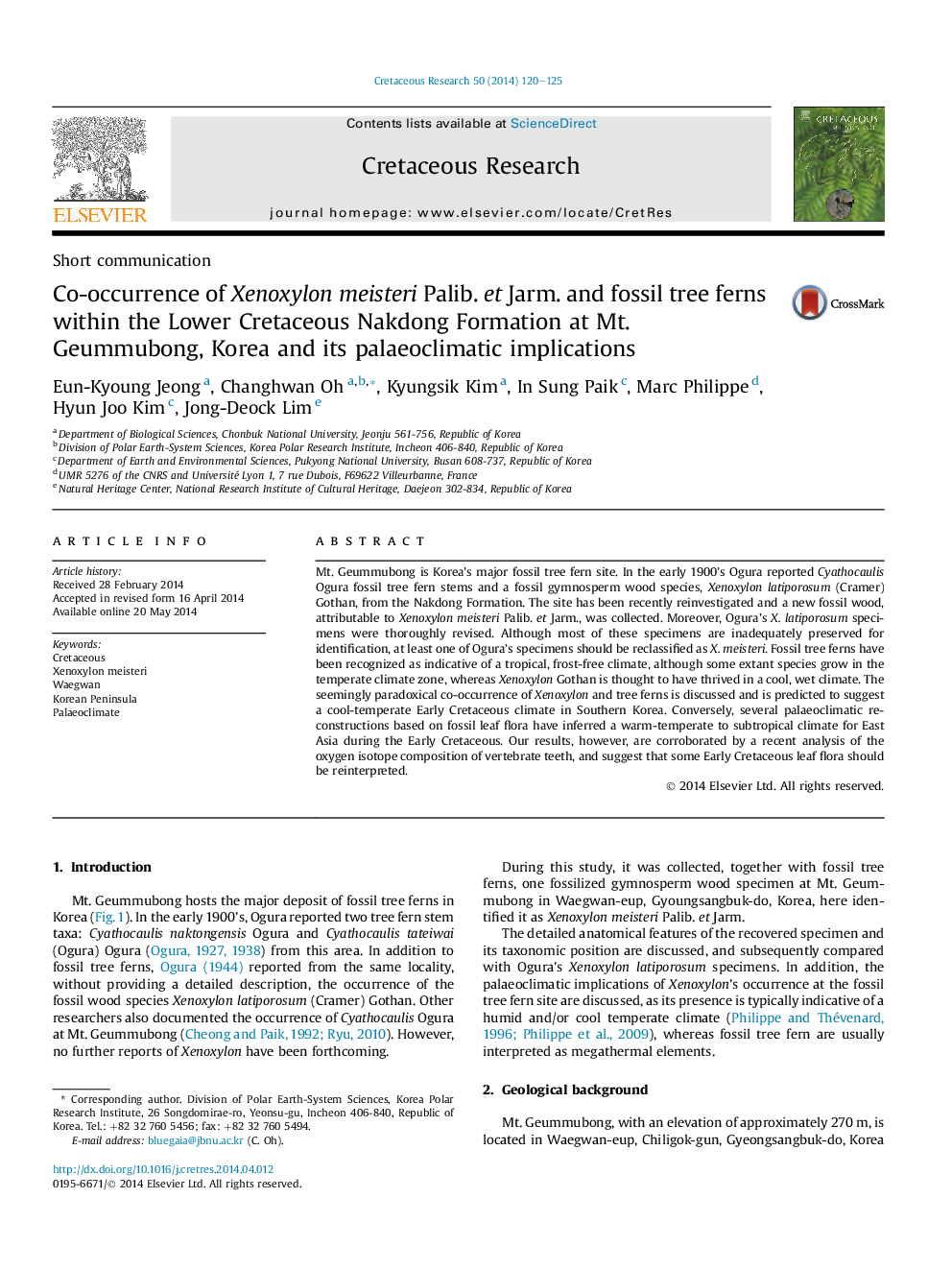| Article ID | Journal | Published Year | Pages | File Type |
|---|---|---|---|---|
| 6448456 | Cretaceous Research | 2014 | 6 Pages |
â¢Mt. Geummubong is the major fossil tree fern site in Korea.â¢We identified one fossil wood species, Xenoxylon meisteri at Mt. Geummubong.â¢One of Ogura's X. latiporosum specimens re-classified to X. meisteri in this study.â¢Xenoxylon and tree ferns were associated at cool and/or humid Early Cretaceous climates.
Mt. Geummubong is Korea's major fossil tree fern site. In the early 1900's Ogura reported Cyathocaulis Ogura fossil tree fern stems and a fossil gymnosperm wood species, Xenoxylon latiporosum (Cramer) Gothan, from the Nakdong Formation. The site has been recently reinvestigated and a new fossil wood, attributable to Xenoxylon meisteri Palib. et Jarm., was collected. Moreover, Ogura's X. latiporosum specimens were thoroughly revised. Although most of these specimens are inadequately preserved for identification, at least one of Ogura's specimens should be reclassified as X. meisteri. Fossil tree ferns have been recognized as indicative of a tropical, frost-free climate, although some extant species grow in the temperate climate zone, whereas Xenoxylon Gothan is thought to have thrived in a cool, wet climate. The seemingly paradoxical co-occurrence of Xenoxylon and tree ferns is discussed and is predicted to suggest a cool-temperate Early Cretaceous climate in Southern Korea. Conversely, several palaeoclimatic reconstructions based on fossil leaf flora have inferred a warm-temperate to subtropical climate for East Asia during the Early Cretaceous. Our results, however, are corroborated by a recent analysis of the oxygen isotope composition of vertebrate teeth, and suggest that some Early Cretaceous leaf flora should be reinterpreted.
